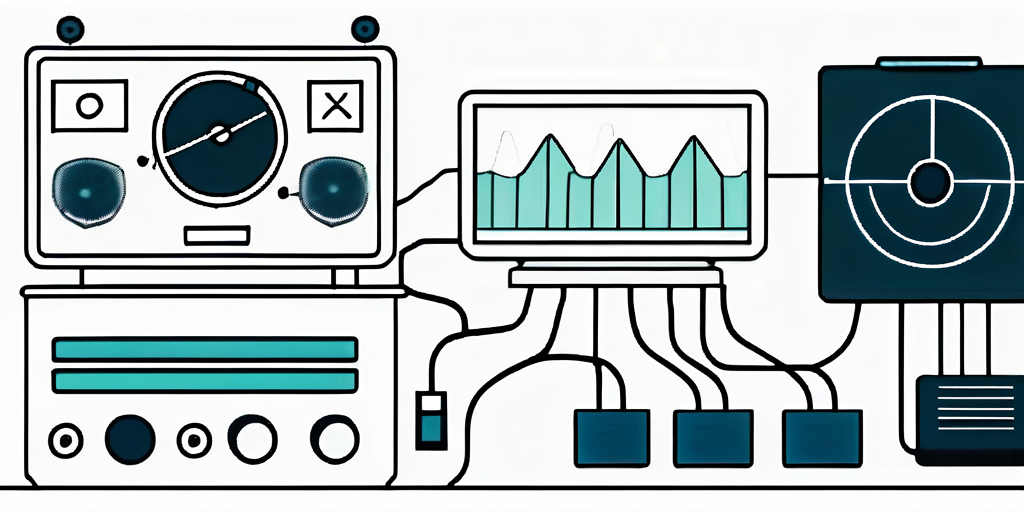Polygraph tests, also known as lie detector tests, have long been a subject of fascination and controversy. They are often portrayed in popular culture as infallible tools for uncovering the truth, capable of detecting deception with pinpoint accuracy. However, there are several myths and misconceptions surrounding polygraph tests that need to be debunked. In this article, we will take a closer look at the science behind polygraph tests, explore their limitations, and separate fact from fiction. So, let's dive in!
Understanding the Basics of Polygraph Tests
Before we delve into the myths and misconceptions surrounding polygraph tests, it's important to understand the basics of how they work. Polygraph tests are designed to measure physiological changes in the body, such as heart rate, blood pressure, and respiratory rate, in response to questions. These changes are believed to be indicators of stress and anxiety, which are often associated with deception.

Now, let's explore the science behind polygraph tests in more detail.
The Science Behind Polygraph Tests
The scientific underpinnings of polygraph tests lie in the assumption that when a person is lying, their physiological responses will differ from when they are telling the truth. This is based on the idea that lying induces stress, which triggers a fight-or-flight response in the body.
When someone is lying, their heart rate may increase, blood pressure may rise, and respiratory rate may become irregular. These changes occur because lying requires cognitive effort and emotional control, which can lead to physiological arousal. On the other hand, when someone is telling the truth, their physiological responses are expected to remain relatively stable.
However, it's important to note that polygraph tests are not foolproof. There are several factors that can influence test results, as we will discuss in the following sections.
How Does a Polygraph Test Work?
During a polygraph test, which typically lasts for a couple of hours, the examiner attaches sensors to the examinee's body. These sensors record physiological changes while a series of questions are asked. The questions usually include control questions, relevant questions, and comparison questions.
The control questions are designed to establish a baseline for the examinee's physiological responses, while the relevant questions are directly related to the issue being investigated. Comparison questions are used to help the examiner interpret the examinee's physiological responses.
As the test progresses, the examiner carefully analyzes the examinee's physiological responses to determine whether there are significant changes during the relevant questions compared to the control questions. If there is a noticeable difference, it may suggest deception. However, it is crucial to remember that physiological responses can also be influenced by factors such as anxiety, stress, or even physical discomfort, which may lead to false results.
Now that we have a basic understanding of how polygraph tests work, let's address the first myth that surrounds them.
Myth 1: Polygraph Tests are 100% Accurate
One of the most persistent myths about polygraph tests is that they are infallible and can detect deception with 100% accuracy. However, this is far from the truth.
The accuracy of polygraph tests varies and is dependent on several factors.
The Truth About Polygraph Accuracy
While polygraph tests can be useful investigative tools, they are not foolproof. Studies have shown that the accuracy of polygraph tests range from 70% to 90%, depending on various factors.
Factors such as the examiner's skill and experience, the quality of the questioning technique, and the physiological responses of the examinee can all influence the accuracy of the test results. It's crucial to consider these factors when interpreting polygraph test results.
Factors Affecting Polygraph Test Results
There are several factors that can affect the results of a polygraph test. For example, certain medications, medical conditions, and psychological factors can alter an individual's physiological responses, leading to inaccurate results.
Additionally, the examiner's biases and preconceptions can also influence their interpretation of the results. This highlights the importance of using polygraph tests as just one piece of evidence in investigations, rather than relying solely on them.
Now that we have debunked the myth of 100% accuracy, let's move on to the next misconception about polygraph tests.
It's important to note that the use of polygraph tests is not universally accepted in all legal systems. While some jurisdictions allow polygraph results as evidence in court, others do not consider them reliable enough to be admissible.
Furthermore, the physiological responses measured during a polygraph test, such as heart rate and sweating, can be influenced by factors unrelated to deception, such as anxiety or stress. This underscores the need for trained professionals to administer and interpret polygraph tests accurately.
Myth 2: Polygraph Tests Can Read Minds
Another common misconception about polygraph tests is that they have the ability to read minds. This belief stems from their portrayal in movies and TV shows, where polygraph tests are shown as a tool for uncovering hidden thoughts and secrets.
However, the reality is quite different.
The Limitations of Polygraph Tests
Polygraph tests cannot read minds or access an individual's thoughts. They can only measure and record physiological responses, which are then interpreted by the examiner. Polygraph tests are based on the assumption that physiological changes are indicative of deception, but they cannot directly access an individual's thoughts or intentions.
What Polygraph Tests Actually Measure
Contrary to popular belief, polygraph tests measure physiological changes, not thoughts or hidden truths. The recorded physiological responses are used as indicators of stress and anxiety, which can be associated with deception but are not definitive proof of it.
It's important to remember that polygraph tests are not mind readers but rather tools that measure physiological responses. Let's now address the next myth surrounding polygraph tests.
While polygraph tests have been used for decades in various fields, including law enforcement and employment screenings, their accuracy and reliability have been a subject of debate. Critics argue that the results of polygraph tests can be influenced by factors such as the examiner's interpretation, the subject's state of mind, and even the type of questions asked.
Furthermore, the American Psychological Association has stated that there is not enough scientific evidence to support the accuracy of polygraph tests in detecting deception. The association notes that individuals can manipulate their physiological responses, leading to false results.
Despite these limitations, polygraph tests continue to be used in certain settings. It's essential for individuals undergoing such tests to understand their purpose and the factors that can impact the results, ensuring a more informed approach to this controversial practice.
Myth 3: It's Easy to Cheat a Polygraph Test
Many people believe that it's easy to beat or cheat a polygraph test by using various techniques to manipulate the results. However, this is not as straightforward as it may seem.

The Reality of Cheating a Polygraph Test
While it's true that there have been instances where individuals have attempted to cheat polygraph tests, trained examiners are generally well-equipped to detect such attempts.
Examiners are trained to recognize signs of countermeasures, such as controlled breathing or intentionally altering physiological responses. They also use various techniques, such as asking unexpected or unpredictable questions, to increase the difficulty of cheating.
In addition, modern polygraph equipment is designed to detect and measure countermeasures, making it harder for individuals to cheat the test.
It's important to note that the accuracy of a polygraph test can be influenced by various factors, including the skill of the examiner, the individual's physiological responses, and even the environment in which the test is conducted.
Furthermore, the interpretation of polygraph results is not always black and white. Examiners undergo extensive training to analyze the data collected during a test, taking into account factors such as baseline measurements and individual differences in physiological responses.
By understanding the complexities involved in polygraph testing, one can appreciate the intricate process that examiners go through to ensure the reliability and validity of the results.
Now that we have debunked the myth of easy cheating, let's move on to the final myth surrounding polygraph tests.
Myth 4: All Polygraph Examiners are the Same
Some individuals believe that all polygraph examiners are equally skilled and that their results can be relied upon without question. However, this is not the case.

The Importance of Qualified Examiners
The skill and experience of the examiner play a significant role in the accuracy and reliability of polygraph test results. A well-trained and qualified examiner will follow standardized procedures, employ appropriate questioning techniques, and interpret the results objectively.
But what does it take to become a qualified polygraph examiner? It's not as simple as just attending a short training course. In fact, becoming a certified polygraph examiner requires extensive education and training. These professionals typically undergo rigorous programs that include coursework in psychology, physiology, and the science behind polygraph testing. They also receive hands-on training, supervised practice, and must pass a comprehensive examination to demonstrate their competence.
On the other hand, an inexperienced or unqualified examiner may introduce biases, employ faulty techniques, or misinterpret the results, leading to unreliable or inaccurate conclusions. This highlights the importance of choosing an examiner who has the necessary qualifications and experience to conduct a polygraph test effectively.
Variations in Polygraph Examination Techniques
It's important to note that there are variations in polygraph examination techniques, and different examiners may have different approaches. While there are standardized procedures that examiners are expected to follow, there may be slight differences in the way they administer and interpret the test.
For example, some examiners may prefer a more confrontational approach, while others may adopt a more conversational and relaxed style. These variations can influence the dynamics of the test and the responses of the examinee. Therefore, it's crucial to choose an examiner who not only meets the necessary qualifications but also aligns with the preferred approach for the specific purpose of the polygraph examination.
In conclusion, polygraph tests are not infallible tools for uncovering the truth. They have limitations and can be influenced by various factors. It's essential to approach polygraph test results with caution and consider them as just one piece of evidence in investigations. By debunking these myths and misconceptions, we can have a better understanding of the reality behind polygraph tests and make more informed judgments.